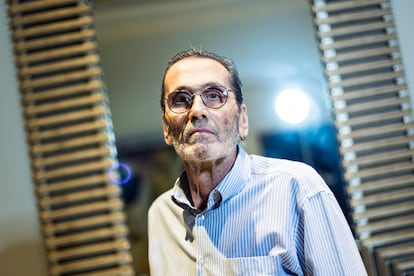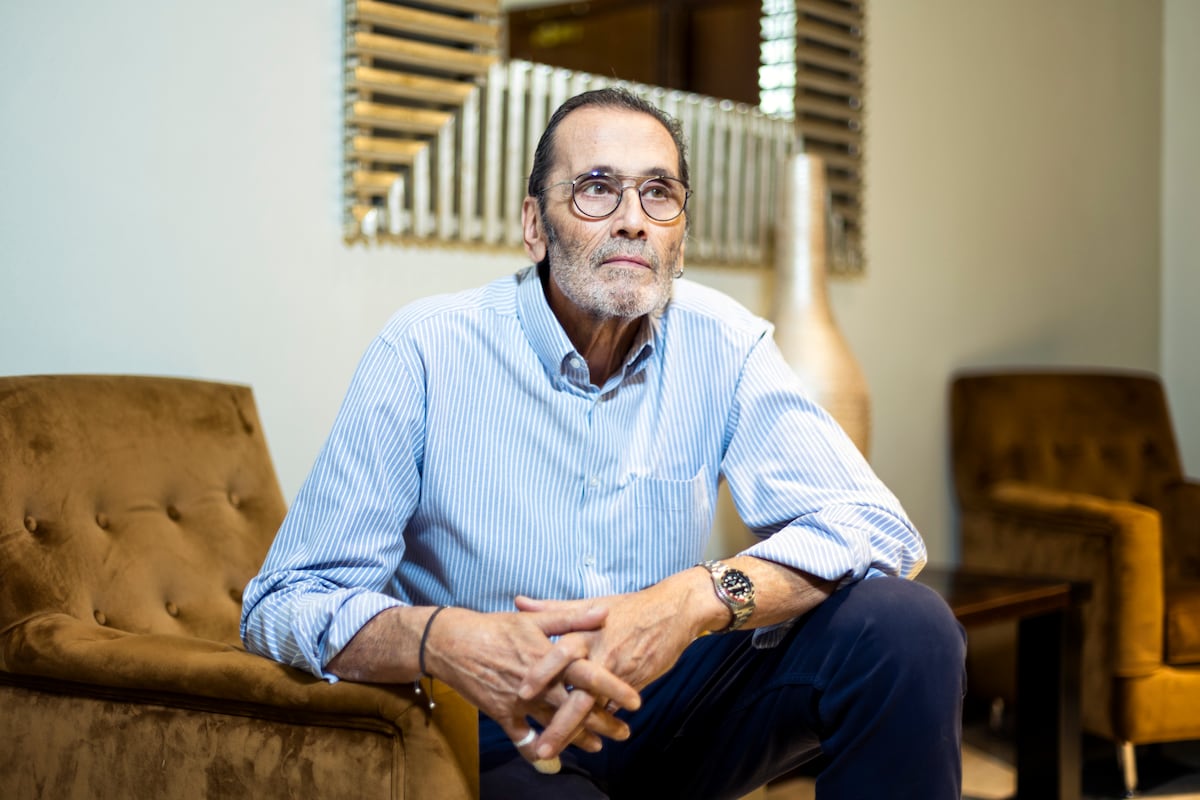After his first psychiatric admission, Francisco Rubio, an activist against mental health stigma and president of the Catalan association Obertament, returned home thinking he was a failure. He assumed that his life project had gone to waste. He felt “overwhelmed, much more than any other previous experience,” he confesses. Self-flagellation and helplessness emerged. His mind began to play on a loop preconceived ideas that he had been assimilating before a psychotic break landed him in the hospital. And he swallowed a bunch of stereotypes all at once. High doses of toxic masculinity added fuel to the fire. “I felt like a weak man, I kept telling myself that I was worthless and that the best thing I could do was get out of the way,” he admits.
For years, Rubio hid his problem—which he prefers not to label—from coworkers and friends. “I lived for a long time installed in lies and shame. Until one day I said enough and came out of the closet,” he says. There were people who turned their backs on him. And people who accepted him without further ado. His current partner, Lourdes, whom he met in another admission, was a bulwark in the new perspective that, little by little, he began to cast on himself: “She helped me realize the human quality that I could have.” , he says excitedly. By progressively removing a “tremendous slab”, they began to validate themselves together. With your problem included.
Self-stigma or internalized stigma in people with mental disorders usually operates in a simple way. “They give you a diagnosis and you apply the schemes that you already have in this regard,” explains Manuel Muñoz López, professor of psychological evaluation at the Complutense University, where he directs a research group on prejudices in mental health. According to a 2021 review, it could severely affect more than 30% of patients with bipolar or psychotic disorders. Another meta-analysis from 2023 estimated its prevalence in people with depression at 29%. There are common elements (feelings of guilt and inability) and specific symptoms for each pathology. Etcetera, etcetera.
Sometimes, self-stigma even precedes the diagnosis. It occurs when the individual, fearful of attributing to himself (and others attributing to him) traits that he considers unacceptable, clings to denial when faced with evidence of the symptoms. He thus installs himself in a kind of interior closet to hide from himself. “He does not want to be identified or identify with that label of mental illness, which he considers very bad,” says Muñoz López. So he lives pretending, hoping that what disturbs his psycho-emotional well-being will magically diminish or disappear. “In Spain, it takes an average of three years for a person with a mental problem to ask for professional help from the moment they have the first symptoms,” adds Muñoz López.
According to Nel González Zapico, president of the Spanish Mental Health Confederation, some current values – associated with a certain idolatry of performance – do not contribute to creating a climate of normality that encourages acceptance (instead of relentless judgment) on an individual level: “ The extreme competitiveness in which we live leads many people with mental health problems to consider themselves very little.” Along these lines, Muñoz López advocates transforming a “repressive” society with its differences into a “more comprehensive” one.
A new study by Basque researchers has confirmed what the literature has been showing for some time: self-stigma has a very negative impact on the patient’s symptoms and recovery. This is extra damage that undermines hope and exacerbates suffering. Its impact is noticeable on self-esteem and social relationships, work integration and personal autonomy. According to a 2021 meta-analysis carried out by French researchers, in regions such as East Asia, in contrast to Western countries, a factor that triggers its intensity prevails: the public ridicule to which the patient and his family are subjected.
One of the authors of the recent study carried out in Euskadi, Mariasun Garay, a clinical psychologist at the Vizcaya Mental Health Network, speaks of a sequence of vicious circles that results in “a Pygmalion effect”: taking for granted the expectations that others place ( or we believe they deposit) on us. Sometimes these beliefs solidify as the immovable core of the personality. “That feeling of a negative way is incorporated into personal identity. This is followed by a question: Why try a change? And from there, the isolation and lack of motivation,” details Garay.
Psychotic disorders emerge as a category in which a prejudice—a special disposition to commit violent acts—can especially torment the patient. González Zapico remembers that, a few years ago, while he was giving a training course to people with schizophrenia, the media reported on an act of “extreme violence” carried out by a person with “serious mental health problems.” Panic spread among the patients. “They were terrified. “They asked me if they could become murderers too.”

Does this particular stereotype contain any truth? In a review of studies published in 2022, researchers from the University of Oxford did find a “moderate increase in the risk of engaging in violent episodes” among schizophrenic patients. With one nuance: drug use increased the odds. Garay maintains that the diagnosis per se is, so to speak, innocuous. The danger comes, if anything, from certain behaviors: “Getting intoxicated with substances or not taking medication.” In any case, Muñoz López abounds in a basic error that feeds any stigma: its absolute disproportion. “Two or three times a year, there are cases in Spain of someone who has committed very violent acts during a psychotic break. “Why do we assume that this marginal incidence represents the entire population with psychotic disorders?” he questions.
To deconstruct self-stigma, experts emphasize the importance of valuing one’s own effort. “Why is there going to be a feeling of failure when it should be one of satisfaction and power, of moving forward?” Muñoz López asks. “The patient must understand that merit has to do with personal improvement and not with achieving a status; “You have to feel the pride of facing day-to-day life with obstacles that others don’t have,” says Garay.
When it comes to coming out, Garay is committed to “doing it well, knowing when and with whom.” Bridging the gap between sexual orientation or mental disorders, Muñoz López draws a parallel with the LGBT community: “Their fight against self-stigma has been brutal and has caused a radical change.” This professor at the Complutense University even calls for the appropriation of derogatory terms. González Zapico subscribes to this opinion: “I have colleagues who claim, with a smile, the label of crazy. “Brilliant people, sometimes with exceptional human quality, perhaps precisely because they have lived through unwanted experiences.” Activist Francisco Rubio says that, while he was learning to integrate his disorder, an unexpected light came on inside him: “I became a better person, much more capable of empathizing with realities to which I previously did not pay any attention.”
